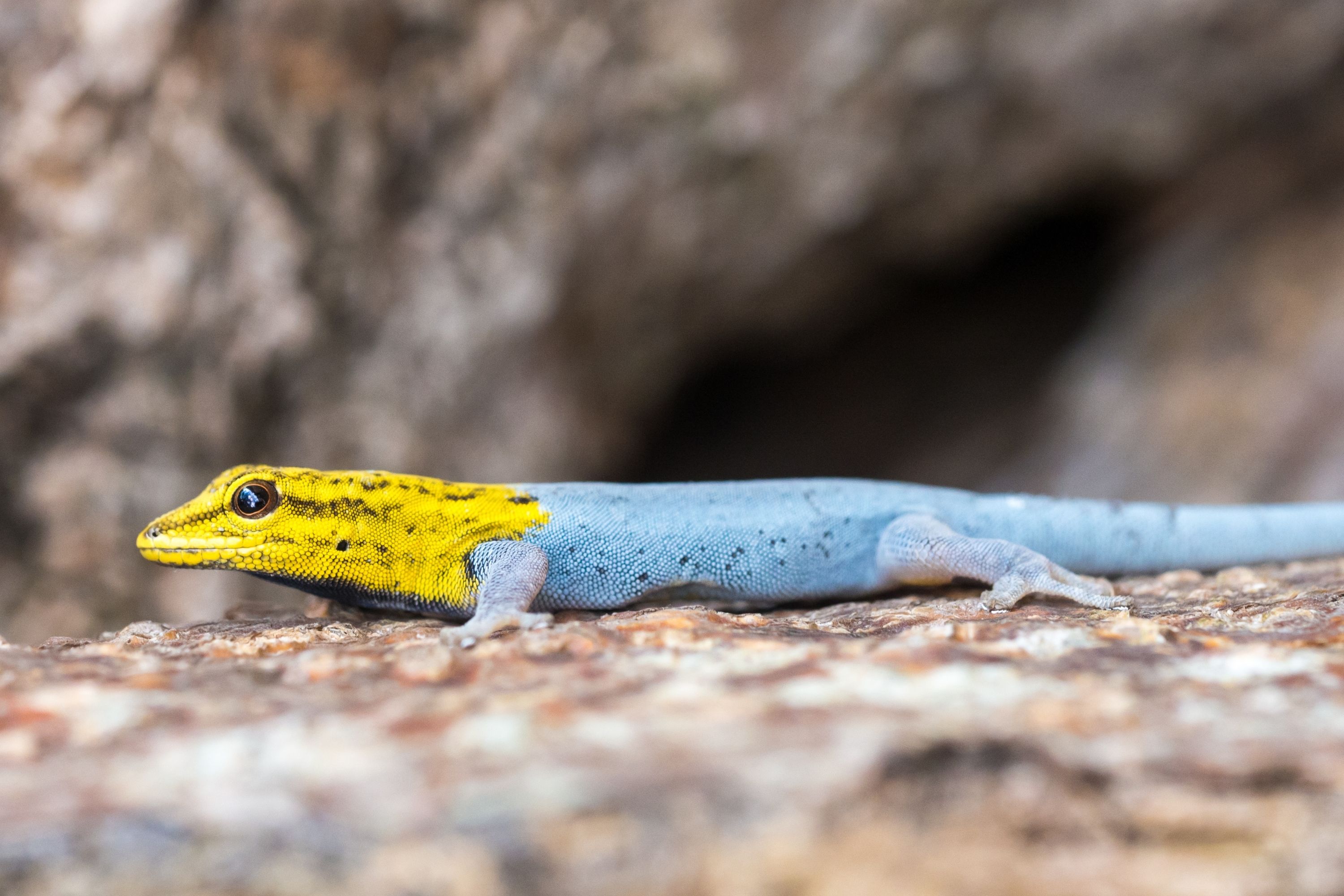Dwarf yellow-headed gecko
(Lygodactylus luteopicturatus)

Description
The yellow-headed dwarf gecko or dwarf yellow-headed gecko (Lygodactylus luteopicturatus) is a small species of dwarf gecko found in the rocky areas of southern Kenya, Somalia (maybe as an introduced species), eastern Tanzania, and Zanzibar. It can grow up to 90 millimetres (3.5 in), but on average attains a length of 80 millimetres (3.1 in) with a snout-vent (body) length of 39 millimetres (1.5 in). The tail length can be equal to the length of the body from snout to the anus (SVL or Snout-Vent Length). The yellow-headed dwarf gecko has a defense mechanism called tail autotomy, where they drop their tails to flee to safety when they are attacked by a predator. However, tail autotomy only gives the gecko an immediate benefit to escape because an autotomized gecko is slower without its tail and has difficulty running on vertical surfaces. Lygodactylus is a genus of diurnal geckos with 72 species. They are commonly referred to as dwarf geckos. They are mainly found in Africa and Madagascar although two species are found in South America. Lygodactylus picturatus, the best known species, is found in Kenya and commonly known as the white-headed dwarf gecko. Recently, illegal importation from Tanzania of brightly colored (and critically-endangered), Lygodactylus williamsi, known as electric blue geckos, has been gaining attention for Lygodactylus geckos in the reptile trade. Since all trade in wild-caught Lygodactylus williamsi is illegal, shipments of these geckos are often intentionally mislabelled as Lygodactylus spp. or as Lygodactylus capensis. As some customs officials have difficulty identifying members of this genus, a Lygodactylus spp. identification guide has been published online by CITES.
Taxonomic tree:







